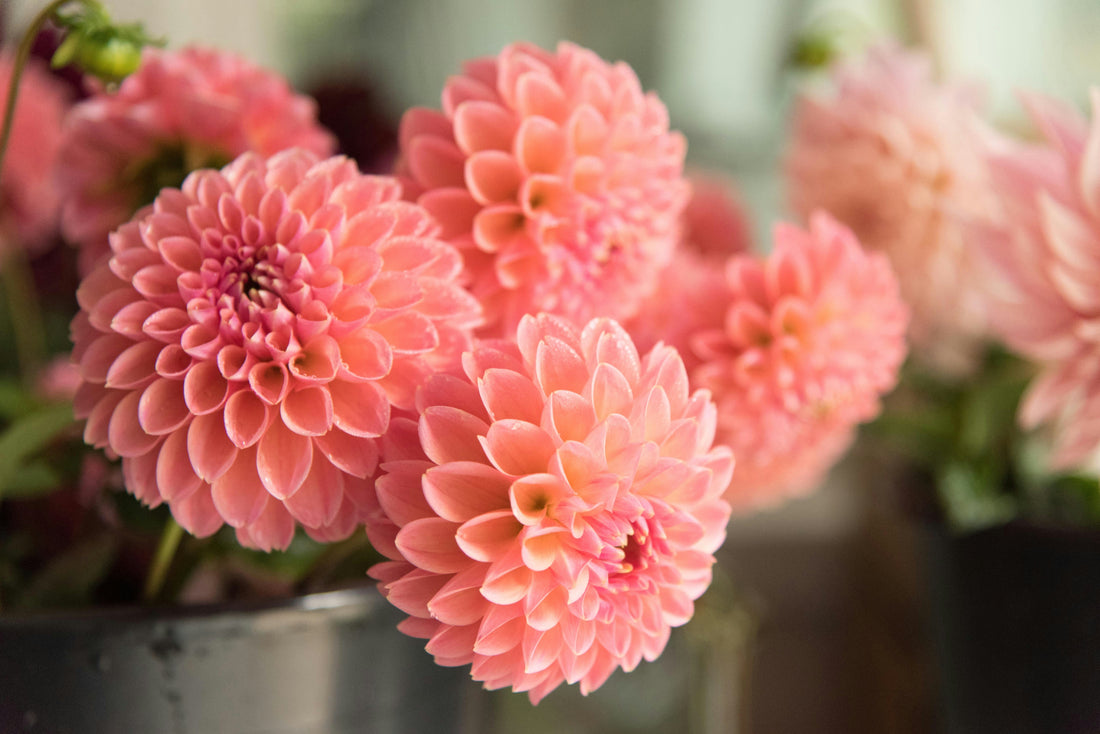Insights from Our Small Farm in Zone 8B
As flower farming continues to grow in popularity, more and more growers are asking: Are dahlia tuber sales really worth it? Whether you're a backyard gardener looking to earn extra income or a small flower farm scaling up your offerings, selling dahlia tubers can absolutely be a profitable and sustainable business venture—if you do it right.
At Prickly Petal Flower Farm, located in Zone 8B in coastal North Carolina, we’ve built a strong foundation around growing, dividing, and selling dahlia tubers as part of our diversified flower offerings. In this post, we’ll break down the benefits, challenges, and profitability of selling dahlia tubers and share exactly how we approach it on our farm to make it worth the effort.
The Demand for Dahlias Is Growing
Dahlias are one of the most popular flowers in the cut flower and home gardening markets—and for good reason. Their incredible variety of shapes, sizes, and colors makes them a favorite for weddings, events, and bouquet subscriptions. But the real magic is in their roots: each healthy dahlia plant can produce multiple viable tubers by season’s end.
Because many dahlia varieties are only available through specialty growers or farm-based sales, demand for quality tubers continues to rise. Customers are willing to pay a premium for specific colors or hard-to-find cultivars—especially if the farm has a strong reputation for quality and care.
Why We Sell Dahlia Tubers at Prickly Petal Flower Farm
When we first started growing dahlias here in Zone 8B, we were focused on cut flower production. But we quickly realized that the tubers themselves were just as valuable—if not more so—than the blooms they produced. We now grow dahlias not only for their seasonal beauty but also as a source of passive, recurring income each spring.
Here’s what we do to make dahlia tuber sales worth it on our farm:
-
Grow proven, in-demand varieties that perform well in our climate
-
Carefully dig, cure, and store our tubers over the winter
-
Divide and inspect for quality before listing them for sale
-
Label everything meticulously to avoid customer confusion
-
Ship bareroot tubers in early spring with care instructions included
Because we’ve already invested the time and labor to grow the plants during the season, tuber sales give us an additional revenue stream without requiring replanting or additional land.
The Profit Potential of Tuber Sales
Let’s break it down. On average, a healthy dahlia plant can produce 3–6 saleable tubers. If each tuber sells for $28-$35 depending on rarity and size, you could be looking at $84–$210 of income per original plant, per year.
Now multiply that across even a small plot of 100 plants, and you can quickly see how tuber sales can become a significant revenue stream. At Prickly Petal Flower Farm, we reinvest profits into more rare varieties, packaging upgrades, and expanding our mailing list of dahlia enthusiasts.
What Makes Tuber Sales “Worth It”?
Tuber sales can be extremely worthwhile if you:
✅ Grow healthy, productive plants
✅ Store and cure your tubers properly
✅ Build a strong customer base
✅ Ship efficiently and on time
✅ Offer varieties that are unique or consistently in demand
We’ve found that transparency and education are key. Each order we ship includes planting instructions, our recommended care tips, and a personal thank-you note that shares a bit of our farm’s story. These small touches have helped us build repeat customers and increase our pre-order sales each season.
Challenges to Consider
Tuber sales aren’t without their challenges. They require time, space, and some risk. Here are a few obstacles we’ve navigated:
-
Storage space: Tubers must be kept in a cool, dry place (we use a modified climate-controlled room in our barn).
-
Rot & loss: Not all tubers survive winter storage, especially in humid climates like ours.
-
Labor-intensive: Digging and dividing takes careful attention—especially if you're labeling multiple varieties.
-
Shipping logistics: Tubers must be well-packed and protected to avoid damage in transit.
However, by building systems and staying organized, we’ve managed to turn these challenges into manageable tasks that now fit seamlessly into our seasonal routine.
Growing Dahlias in Zone 8B
One question we get often is: “Can dahlias really thrive in Zone 8B?”
The answer is yes—with the right care.
On our farm, we:
-
Plant tubers after the last frost (usually late March to early April)
-
Pinch early to encourage branching
-
Dig and divide after the first frost in late fall
-
Store tubers in peat moss or vermiculite at around 45–55°F
Thanks to our mild winters and long growing season, we often get more tuber development than farms in cooler zones.
Final Thoughts
So—are dahlia tuber sales worth it?
For us at Prickly Petal Flower Farm, the answer is a clear yes. Not only do they provide an additional income stream, but they also connect us with a growing community of flower lovers, home gardeners, and small-scale growers looking to start or expand their own patches.
If you’re willing to invest the time in growing healthy plants, storing tubers properly, and building trust with your customers, dahlia tuber sales can be a fulfilling and profitable addition to your flower farming journey.
Ready to start selling or growing your own dahlias? Visit our online shop for this season’s tuber selection and follow us on social media for behind-the-scenes tips from our farm in Zone 8B.
